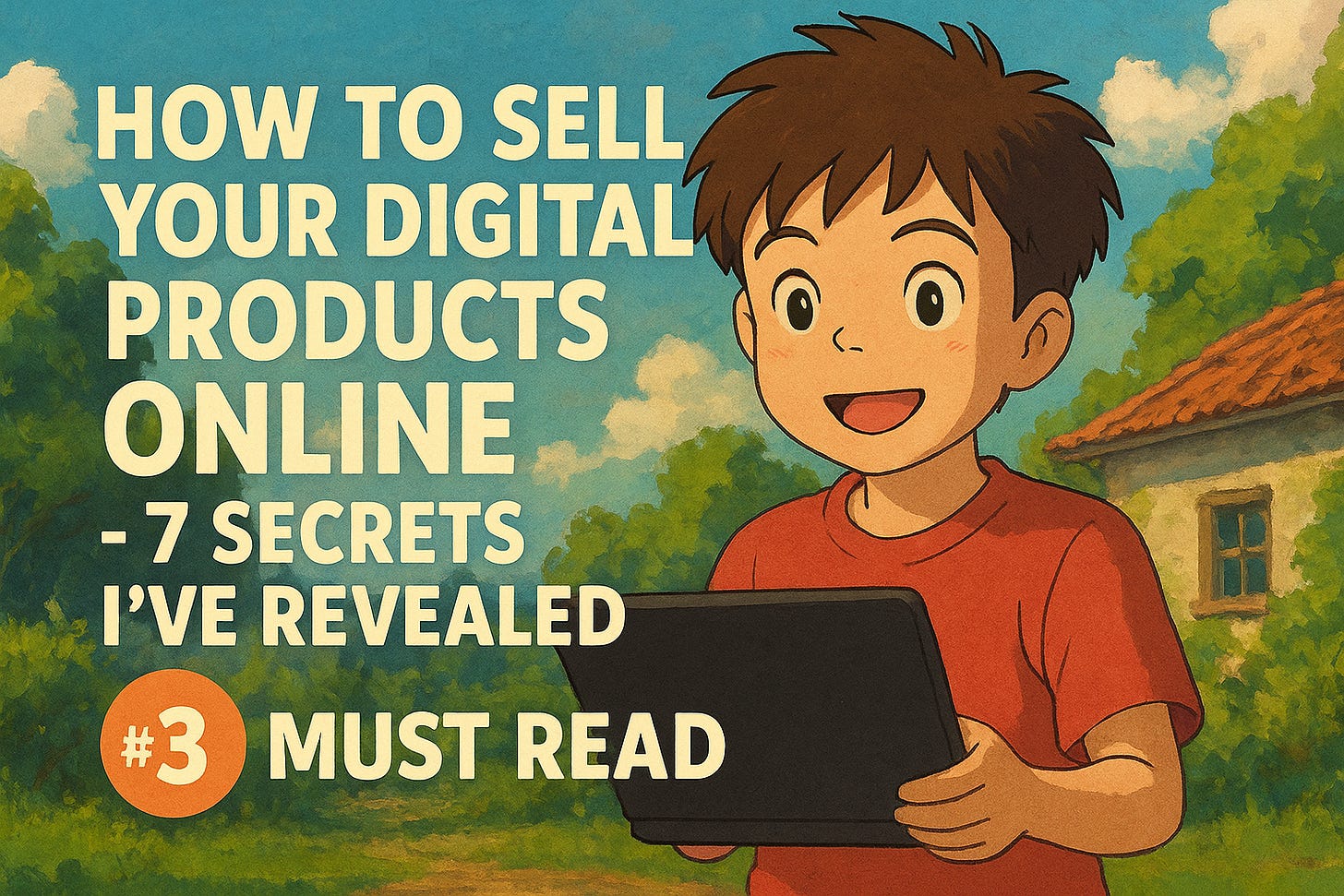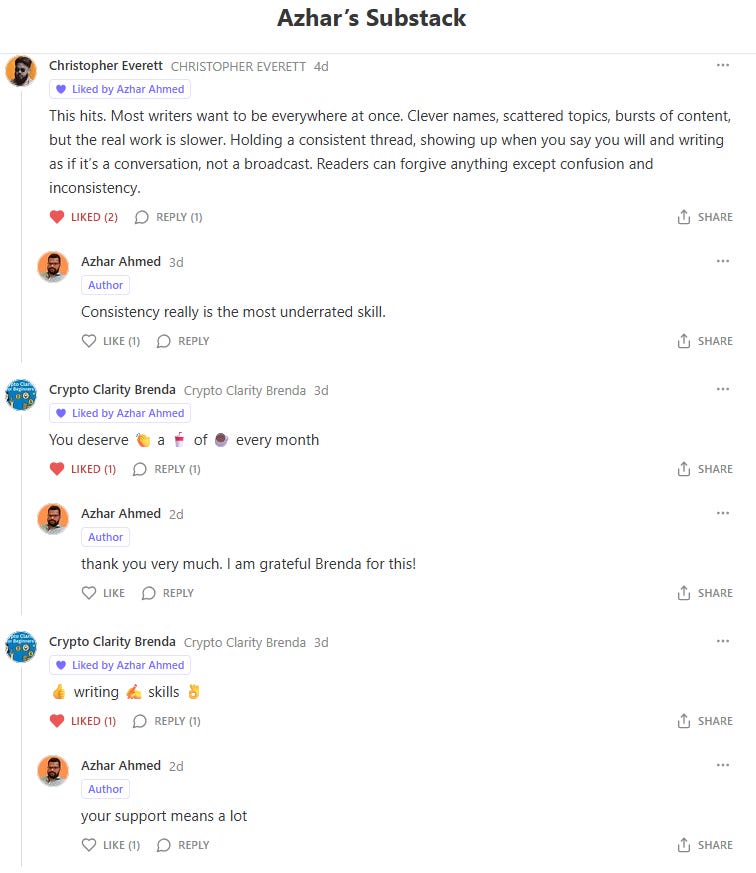How to Sell Your Digital Products Online - 7 Secrets I've Revealed (#3 Must Read)
Turn your digital products into real revenue
You’ve put hours — maybe even months — into creating your digital product.
It might be an online course, an ebook, a template pack, or a membership. You launch it with excitement, share it once or twice… and then nothing happens.
Crickets.
If that’s you, you’re not alone. Most digital products fail not because they’re bad, but because people don’t know they exist. And even when they do, they don’t feel ready to buy.
The truth is: great products don’t sell themselves — great marketing does.
The good news? You don’t need a huge audience, fancy ads, or expensive tools to sell yours. You just need a simple, step-by-step plan.
In this guide, I’ll walk you through the most effective marketing strategy for selling your digital products online.
1. Know Exactly Who You’re Selling To
This is the biggest mistake I see creators make: they try to sell to everyone.
If you say, “My ebook is for anyone who wants to be more productive,” you’re going to struggle. Why? Because “anyone” isn’t a real person. You can’t speak directly to their problems, and your message ends up too vague to convince anyone to buy.
The solution: get laser-specific about your ideal customer.
Here’s how to do it:
Identify their main problem: What keeps them up at night? What’s frustrating them daily?
Understand their dream outcome: What do they want to achieve or change in their life?
Learn where they spend time online: Are they on Instagram? Reddit? LinkedIn?
For example:
Instead of saying, “This course is for anyone who wants to start a business,” say:
“This course is for busy 9-to-5 employees who want to launch a side hustle that earns $1,000/month in 90 days.”See the difference? Now your product feels like it was made for someone specific — and they’re far more likely to buy.
2. Build Trust Before You Sell Anything
People don’t buy from strangers. They buy from people they trust.
Think about the last digital product you purchased. Chances are, you didn’t hand over your money to a random ad — you followed someone, read their content, and felt they understood your problems before you bought.
That’s why trust is your #1 marketing asset.
Here’s how to build it:
Share free value: Post tips, mini-guides, or short lessons related to your product.
Tell your story: Talk about your struggles, mistakes, and how you solved them — people connect with honesty.
Show proof: Share testimonials, reviews, or results (yours or your customers’).
The key is consistency. One post won’t build trust — but showing up week after week will. When people see your name often and associate it with helpful content, they’ll naturally want to know more about what you offer.
3. Create Content That Sells Without Feeling “Salesy”
No one likes being sold to — but everyone loves learning something useful. That’s why the best marketing doesn’t feel like marketing at all.
Your goal is to create content that educates, entertains, and builds curiosity — and gently leads people toward your product.
Here are three types of content that work like magic:
Mini tutorials: Quick, actionable lessons that solve small parts of a bigger problem.
Behind-the-scenes: Show how you built your product or how you use it in real life.
Case studies or success stories: Share how your product helped someone achieve a result.
Here’s an example:
If you’re selling a productivity course, don’t just say, “Buy my course.”
Instead, share a free 5-minute tip that helped you cut your to-do list in half. At the end, mention: “If you want to learn my full system, it’s inside my course.”This way, people get value even if they don’t buy — but they’ll also see how much more they could gain if they do.
4. Build a Simple Sales System (Even a Beginner Can Do It)
Most creators post about their product once and then hope for sales. That’s not a strategy — that’s wishful thinking.
To sell consistently, you need a simple system that turns curious followers into paying customers.
Here’s a beginner-friendly version you can set up:
Landing page: A single page that explains what your product is, who it’s for, and what results it delivers. Keep it clear and benefit-driven.
Email list (optional but powerful): Offer a free resource (like a guide or checklist) in exchange for email addresses. Then send helpful tips and product info over time.
Call-to-action: Every piece of content you create should end with a clear next step — “Download the free guide,” “Join the waitlist,” or “Buy now.”
The goal is simple: don’t rely on luck. Guide people step by step from discovering you → trusting you → buying from you.
Example: Just Like I’ve done it for my Threads to Experts - A Mastery Guide on Beacons.
5. Launch Like a Pro — Even If It’s Your First Time
Your product deserves more than a single social media post. A proper launch builds excitement, urgency, and momentum — even if you don’t have a big audience.
Here’s a simple launch plan you can follow:
1. Tease before launch (1–2 weeks):
Start dropping hints. Share behind-the-scenes posts, lessons you learned while creating it, and small wins from early testers.
2. Build anticipation:
Use stories like, “I’m launching something next week that will help you achieve X without Y.”
3. Launch week:
Send emails or post daily.
Highlight the product’s benefits.
Share testimonials or early results.
Offer a limited-time bonus or discount to encourage fast action.
4. Close with confidence:
Remind people when the offer ends and why it’s worth it. Most sales happen in the final 48 hours — don’t be afraid to repeat your message.
Launching isn’t about being pushy. It’s about giving people multiple chances to see, understand, and act on your offer.
6. Turn One-Time Buyers Into Loyal Customers
Selling your digital product once is great — but turning buyers into repeat customers is how you build real income.
Think about it: if someone has already bought from you, they’re 3–5 times more likely to buy again. But only if you nurture that relationship.
Here’s how:
Follow up after the sale: Send a thank-you email, check if they need help, and ask for feedback.
Create complementary products: If they bought a course on “how to start,” maybe your next one is “how to scale.”
Build a community: Invite them to a private group, monthly calls, or newsletters — anything that keeps them connected to you.
The more you show up for your customers after the sale, the more trust you build — and the easier future sales become.
7. Bonus Tips: What Separates Successful Sellers From Struggling Ones
Before we wrap up, here are a few mindset shifts that make a massive difference:
Sell solutions, not features. People don’t care about “10 modules” — they care about “launching a business in 30 days.”
Talk like a human. Drop the jargon. Speak the way your audience speaks.
Show your face. People connect with people, not logos. Don’t hide behind your brand.
Keep learning from feedback. Every launch teaches you something. Use that to make the next one better.
Want to know which Digital Products is best for you? Download my Digital Products Beginner Guide for FREE.
Conclusion – Your Product Deserves to Be Seen
Creating a digital product is an achievement in itself — but selling it is a whole different skill. The good news is, it’s a skill anyone can learn.
To recap:
Know exactly who you’re selling to.
Build trust before you sell.
Create content that naturally leads to your product.
Set up a simple sales system.
Launch with intention and energy.
Nurture customers for repeat sales.
Follow these steps, stay consistent, and don’t be discouraged if it takes time. Every successful creator you follow today started from zero — the difference is, they kept showing up.
Your product can change someone’s life. Now it’s time to make sure they know it exists.
Learn with Azhar is free today. But if you enjoyed this post, you can tell him that his writing is valuable by pledging a future subscription. You won’t be charged unless they enable payments.




So many practical gems here. It’s a good reminder that creating is only half the job, showing up to sell matters just as much. Consistency really does separate the hopeful from the successful.
Appreciate this! I know I have valuable information to share but I couldn’t understand why my digital products were not selling. This article brought clarity!